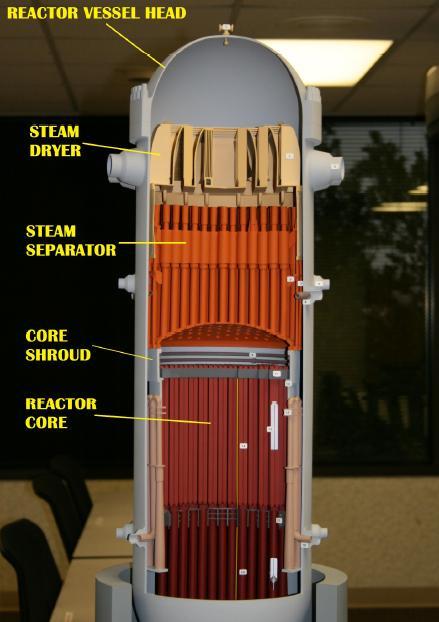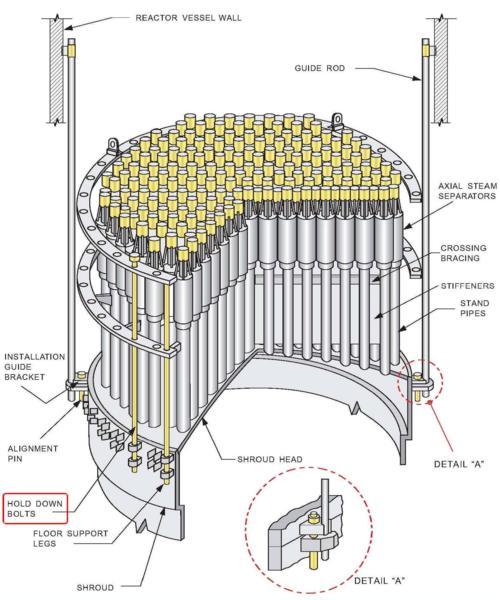 Figure 1
Figure 1
As recounted in Fission Stories #81, the first refueling outage at the Grand Gulf Nuclear Station in Mississippi involved some misadventure. The plant’s second refueling outage was noteworthy even before the first fuel bundle was moved.
Mississippi Power & Light Company, which had changed its name to System Energy Resource Incorporation (SERI) en route to its current name of Entergy Operations, hired General Electric to perform many of the refueling tasks. A GE crew removed the concrete shield blocks, the drywell head, insulation material, the reactor vessel head, and the steam dryer.
The GE crews changed shifts during the removal of the steam separator. The steam separator rests inside the reactor vessel just above the reactor core (Figure 1). The steam produced by water flowing through the reactor core enters first the steam separators and then the steam dryer to remove moisture droplets before the “dry” steam leaves the reactor vessel heading for the main turbine while the water drains back onto the reactor core.
The steam separator is bolted (Figure 2) to a metal cylinder called the core shroud encasing the reactor core. The steam dryer rests by gravity atop the steam separator.
 Figure 2
Figure 2
After shift turnover, the new GE crew hooked the auxiliary building’s overhead crane to the steam separator and tried lifting it out of the reactor vessel. It refused to budge.
The crew tried to lift the steam separator again and again without success.
Then a worker spotted the problem—one of the bolts fastening the steam separator to the core shroud had not been removed by the first crew. The second crew essentially tried lifting the entire reactor vessel. Luckily, it didn’t happen.
Our Takeway
S T A R.
The nuclear industry with its fondness for acronyms developed STAR—Stop, Think, Act, Review—specifically for situations like this in mind. The training given to workers about STAR directs them to invoke the process any time they encounter discomfort while following a procedure or encounter an unexpected outcome.
When the process used at many reactors for decades to remove the steam separator from the reactor vessel failed to do so, STAR should have been invoked. It’s not just another four-letter word. It’s a method for safely handling unanticipated situations.
A thorough STAR effort would have found the remaining bolt much earlier in the process.
“Fission Stories” is a weekly feature by Dave Lochbaum. For more information on nuclear power safety, see the nuclear safety section of UCS’s website and our interactive map, the Nuclear Power Information Tracker.
